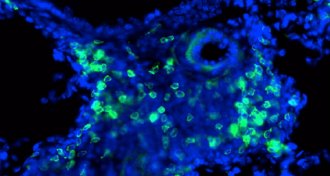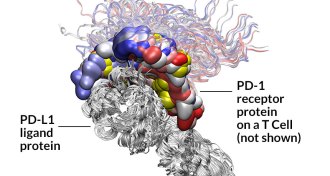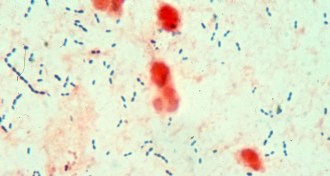Health & Medicine
-
 Health & Medicine
Health & MedicineE-cigarettes proving to be a danger to teens
E-cigarettes have surpassed cigarettes as the most commonly used tobacco product among teenagers. Medical researchers are sounding the alarm.
By Janet Raloff -
 Science & Society
Science & SocietyNo matter the language, disease risk is hard to communicate
Reassuring messages about MERS might seem designed to stop panic. But in reality, people need to hear the truth, even if it’s uncertain.
-
 Health & Medicine
Health & MedicineShould you eat your baby’s placenta?
More women are choosing to eat their baby’s placenta after giving birth, but the evidence for benefits isn’t there yet.
-
 Plants
PlantsPoppy yields the final secret to making morphine
Scientists have successfully transplanted most of the morphine synthesis pathway from poppies to yeast. Now the final step is ready to be put in place.
-
 Health & Medicine
Health & MedicineSwitching off nerve cells eases asthma attacks
A drug that numbs nerve cells in mice’s airways offers a new way to ease the effects of an asthma attack.
By Meghan Rosen -
 Health & Medicine
Health & MedicineNew cancer drugs wake up sleeping killer T cells
The immune system’s T cells, often evaded by tumors, might now resume the attack.
By Nathan Seppa -
 Health & Medicine
Health & MedicineSpit test could provide early warning of head, neck cancers
A new study shows that signs of head and neck cancer can be detected in saliva and blood plasma even before tumors are clinically diagnosed.
-
 Health & Medicine
Health & MedicineCurtailing calories on a schedule yields health benefits
Eating an extreme low-calorie diet that mimics fasting just a few consecutive days a month may yield a bounty of health benefits, research suggests.
-
 Health & Medicine
Health & MedicineAntibiotics can treat appendicitis
Antibiotics can successfully treat the majority of cases of a type of appendicitis, researchers find.
By Meghan Rosen -
 Health & Medicine
Health & MedicineRehab for psychopaths
Psychopaths often don’t fit movie stereotypes, but they share particular characteristics. New research shows that, contrary to popular thought, cognitive behavioral therapy can help some psychopaths stay out of prison.
By Bruce Bower -
 Health & Medicine
Health & MedicineAntibiotics an alternative to surgery for appendicitis
Doctors could abandon routine surgery for uncomplicated cases of appendicitis, a new study suggests.
By Meghan Rosen -
 Genetics
GeneticsPneumonia bacteria attacks lungs with toxic weaponry
Some strains of the bacteria that causes pneumonia splash lung cells with hydrogen peroxide to mess with DNA and kill cells, a new study suggests.